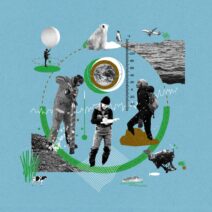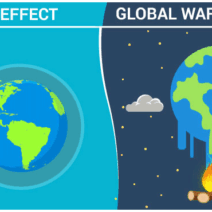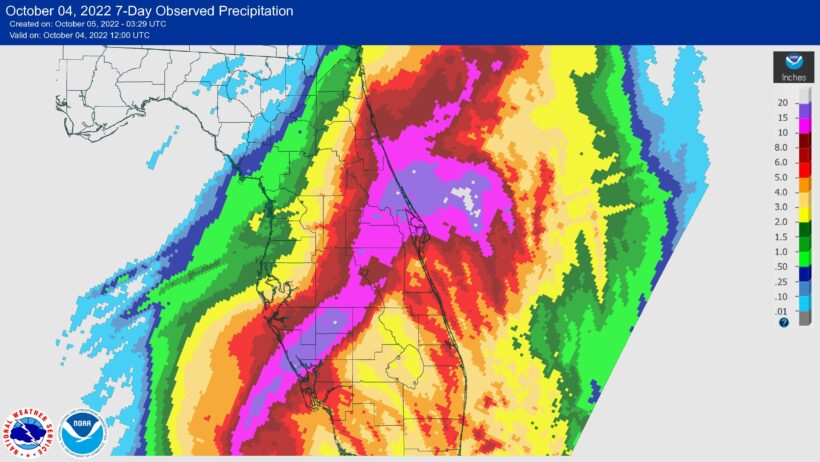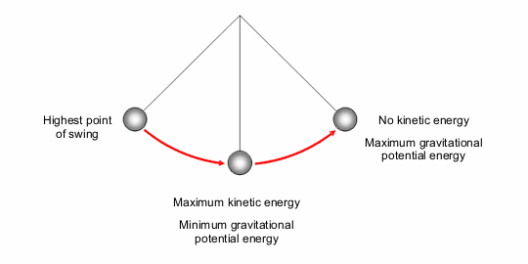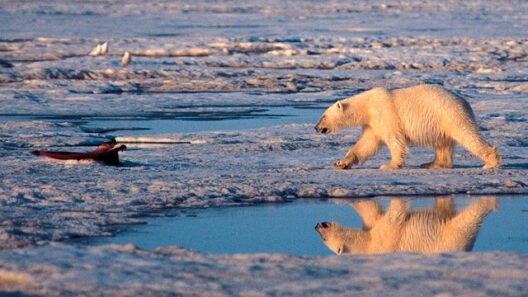The phenomenon of global warming manifests through a myriad of environmental changes, interlinking disparate systems of our planet. One of the most striking manifestations is the transformation of glaciers and the intensified activity of hurricanes. Both processes are shaped by the escalating temperature of the earth, and their interconnectedness reveals the intricate tapestry of ecological consequences. To grasp the extent of global warming, we must delve into the melting glaciers and the strengthening of hurricanes, understanding how the two are intertwined in the face of climate change.
Glaciers, considered vital indicators of climate health, hold approximately 69% of the world’s fresh water in frozen form. These majestic ice formations are not merely stunning landscapes; they play a crucial role in regulating global sea levels. As temperatures rise, glaciers are succumbing to accelerated melting. This glacial retreat is not solely a loss of ice; it directly contributes to rising sea levels, threatening coastal communities worldwide. For instance, the Greenland Ice Sheet has been shedding mass at an unprecedented rate, a process that has substantial implications for global water levels.
The alarming rate of ice loss also disrupts local ecosystems. Glacial meltwater feeds rivers and lakes, nurturing surrounding flora and fauna. Disruption of this flow can lead to alterations in biodiversity, harming species dependent on these water sources. Furthermore, the freshwater influx alters salinity levels in oceans, impacting marine life and the larger oceanic currents that regulate weather patterns across the globe.
But the repercussions of climate change are not confined to glaciers alone; they ripple through the atmosphere, culminating in meteorological phenomena such as hurricanes. As ocean temperatures rise, tropical storms are becoming more intense. Warmer water acts as fuel for hurricanes, increasing their strength and duration. While hurricanes have always existed, their ferocity is magnified by climate change—a clear representation of how one aspect of our ecosystem influences another.
Studies have shown a direct correlation between warm ocean waters and hurricane intensity. For example, the devastating Hurricane Katrina in 2005 and Hurricane Sandy in 2012 exemplify this trend. These storms caused unprecedented damage, not merely in terms of physical destruction but also regarding economic losses and human displacement. As the climate continues to warm, meteorologists predict a rise in similarly catastrophic storms, necessitating a re-evaluation of disaster preparedness and management.
An interesting facet of this discussion is how hurricanes, in turn, impact glacial environments. Intense storms can accelerate ice loss by contributing to meltwater, causing ice shelves to fracture and break apart. The turbulence from these hurricanes can carve pathways through glaciers, hastening the process of disintegration. This cyclical feedback loop emphasizes the urgency of addressing climate change, as the repercussions of a warming planet are both immediate and long-range.
Moreover, shifting weather patterns induced by hurricanes can alter precipitation trends in glacial regions. Changes in snowfall affect the replenishment of glaciers, further exacerbating their decline. This relationship sheds light on the complex interdependencies within our climate system, demonstrating that the effects of global warming are seldom linear and often unexpected.
Mitigating these adverse effects requires a multifaceted approach. Transitioning to renewable energy sources is critical in reducing greenhouse gas emissions, the primary driver of climate change. Additionally, protecting and restoring ecosystems, such as wetlands and forests, can enhance natural carbon sinks, aiding in the diminishment of atmospheric CO2 levels. These ecological strategies can work in tandem with technological innovations to provide a robust response to this crisis.
Public awareness and engagement are fundamental. Understanding the connection between glaciers and hurricanes can mobilize communities and individuals to advocate for proactive climate policies. Educational initiatives aimed at elucidating these complex interrelationships can foster a sense of urgency in addressing climate change. The stories of glaciers receding and hurricanes intensifying should serve as a clarion call, compelling society to act with immediacy.
Additionally, interdisciplinary collaborations among scientists, policymakers, and advocates are essential. Researchers from climatology, environmental science, and related fields must convene to share insights and drive innovation in climate adaptability and resilience strategies. Policymakers should be equipped with robust data to formulate effective legislation aimed at curtailing the rapid onset of climate-induced disasters.
Moreover, local communities have a role in addressing climate change. Grassroots movements promote sustainable practices that mitigate harmful impacts. These local actions contribute to a larger global movement, highlighting the interconnectedness of individual efforts in combating a collective crisis. By grounding solutions in community engagement, the ethos of sustainability can flourish, fostering resilience amid climatic upheaval.
Lastly, the integration of technology plays a crucial role in combating climate change. The development of advanced modeling techniques can enhance predictions of weather patterns and glacial melt. Satellites can provide real-time data on climate shifts, allowing for informed decision-making to mitigate adverse outcomes. These tools are pivotal in shaping a proactive rather than reactive approach to a warming planet.
In conclusion, the interconnected dynamics of glaciers and hurricanes unfurl a narrative of climate change that demands urgent attention. From the receding ice at the poles to the increasingly violent storms ravaging coastal regions, the fabric of our environment is fraying, revealing the profound impact of global warming. Addressing this multifaceted crisis requires a concerted effort, blending science, advocacy, community engagement, and innovation. As we navigate this path forward, it is paramount that we embrace our collective responsibility to foster a sustainable future for generations to come.

